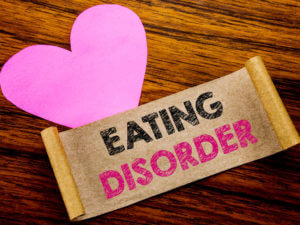 What is Body Dysmorphic Disorder?
What is Body Dysmorphic Disorder?
Body Dysmorphic Disorder or BDD is a condition where someone obsesses about flaws in their body or appearance that most people would not notice. Sometimes the person is so embarrassed to the point that they will not engage in social situations to avoid being around other people.
When you suffer from Body Dysmorphic Disorder or BDD you often check your appearance in the mirror, looking for things wrong and will seek reassurance of how you look from other people in hopes to feel better. You may look to medical procedures to change your appearance in a positive way to make yourself look better. Although, there may be temporary satisfaction with this, eventually it goes away and the person finds something else wrong.
The most common areas of concern with people who have Body Dysmorphic Disorder include:
- Skin Imperfections- wrinkles, scars, acnes or other skin blemishes
- Facial Features- most likely involving the nose or other skin features that include size or shape
- Hair- head or body hair or could include the loss of hair
- Body Weight- obsession with body size or muscle tone
Symptoms of Body Dysmorphic Disorder:
- Engaging in repetitive behaviors such as checking yourself in the mirror, picking at your skin or adjusting your clothing or appearance to “look better”
- Constantly seeking reassurance that the issue is not there or is gone
- Checking the defected area constantly
- Issues with school, work or relationships due to obsession with the “defect”
- Avoiding going out in public and feeling anxious around other people
- Seeking out advice from medical practitioners to find ways to make your appearance better
Causes of BDD
There is no definite cause of Body Dysmorphic Disorder or BDD but some of the reasons can include:
Genetic Condition – there is a small study that has shown a relationship between specific genetic factors and BDD. The study has shown that approximately 8% of people have a family member that also suffers from the disease.
Obsessive Compulsive Disorder (OCD) – People who have been diagnosed with OCD or have a family member who has been diagnosed may also suffer from BDD. A study has shown that 8-37 % of people with OCD also have BDD. There are other genetic factors that may show that both BDD and OCD, but more research is needed. The same treatment is used for OCD and BDD.
Features of the Brain – A small study show there is evidence to show that people with BDD who did tasks such as drawing or viewing images tend to overfocus or pick out specific negative characteristics more than those who don’t have it.
Low levels of Serotonin – There have been links to low levels of serotonin and people with BDD but there is no clear distinction to what role serotonin plays. Serotonin has been used as a treatment method and has had some success in making people with BDD change.
Past experiences – Research shows that people who have been teased or made fun of during their childhoods could experience BDD as a result.
BDD Diagnosis
The first step in determining whether you have BDD or not is to seek your primary care physician. From there, they will perform a physical and mental exam to determine your circumstances and if you need to be referred to a specialist.
Some people who suffer from BDD will never get the treatment they need or be formally diagnosed. This is because many people will not seek medical help for it. Many times people with this disorder will seek out help from an orthodontist, plastic surgeon or dermatologist that can help make changes with their physical appearance.
Diagnosis is typically determined with:
- A psychological assessment to determine risk factors, thoughts, feelings or behaviors that might lead to believe the person has BDD
- Medical history including personal, social or family members who have the disease
- Symptoms that are listed in the Diagnostic and Statistical Manual of Mental Disorders DSM-5, published by the American Psychiatric Association
Treatment for BDD
There are behavioral treatments as well as medications that can be used for treating BDD. The goal of treatment is to improve the quality of life and day to day functioning of the person who is suffering. It is also important for the person to learn how to function without the obsession with appearance and compulsive behaviors.
- Cognitive Behavioral Therapy – CBT has been shown to be helpful in both an individual and a group setting depending on the person and is currently the only behavioral treatment for BDD
- Serotonin Reuptake Inhibitors (SRI’s) – these are considered the best medications that can be used for treating BDD
Why use CBT?
The use of cognitive behavioral therapy can be used to help individuals who over-focus and obsess over small details learn to see things as a big picture. A person with BDD has a strong opinion of how they look and will do whatever it takes for them to feel like they are “attractive.” The goal of CBT is to help the person overcome these insecurities and come to a place where they feel comfortable and secure.
CBT is both supported by individual or group therapy and is the only treatment that has been researched to help with symptoms of BBD. It focuses on our thoughts or repetitive behaviors that might happen due to BBD. It also addresses the constant need for acceptance and the person focusing on their perceived flaws in their appearance.
What does CBT look like?
During CBT treatment the therapist and the individual work together to process the feelings associated with their BDD and determine the proper treatment that will help them overcome it.
CBT can also help individuals learn how to stop comparing themselves to others in the room and the ability to make eye contact with people. Avoidance behaviors are often used among people with BDD in order to decrease anxiety or distress that they are facing with their appearance or other areas of their life.
Recover from BDD In Los Angeles
Body dysmorphia is a condition that is no less painful than any other mental health illness. Those who have it are often experiencing a number of other symptoms underneath the guise of being perfect, such as low self-esteem, pervasive sadness, feeling emotionally drained, and suicidal thoughts. However, our body dysmorphia treatment in Los Angeles can offer those individuals the opportunity to get in control of their behaviors in ways that support their positive mental health.
If you are struggling with body dysmorphia, know that you are not alone. About 1 in 50 people in the United States have this condition, as it is extremely pervasive. But you do not need to remain trapped in your dysmorphia. You can make the changes you need to live happily.
Do not wait. Reach out to our caring professional staff today to learn more about our Los Angeles body dysmorphia treatment program.




 What is Body Dysmorphic Disorder?
What is Body Dysmorphic Disorder?







